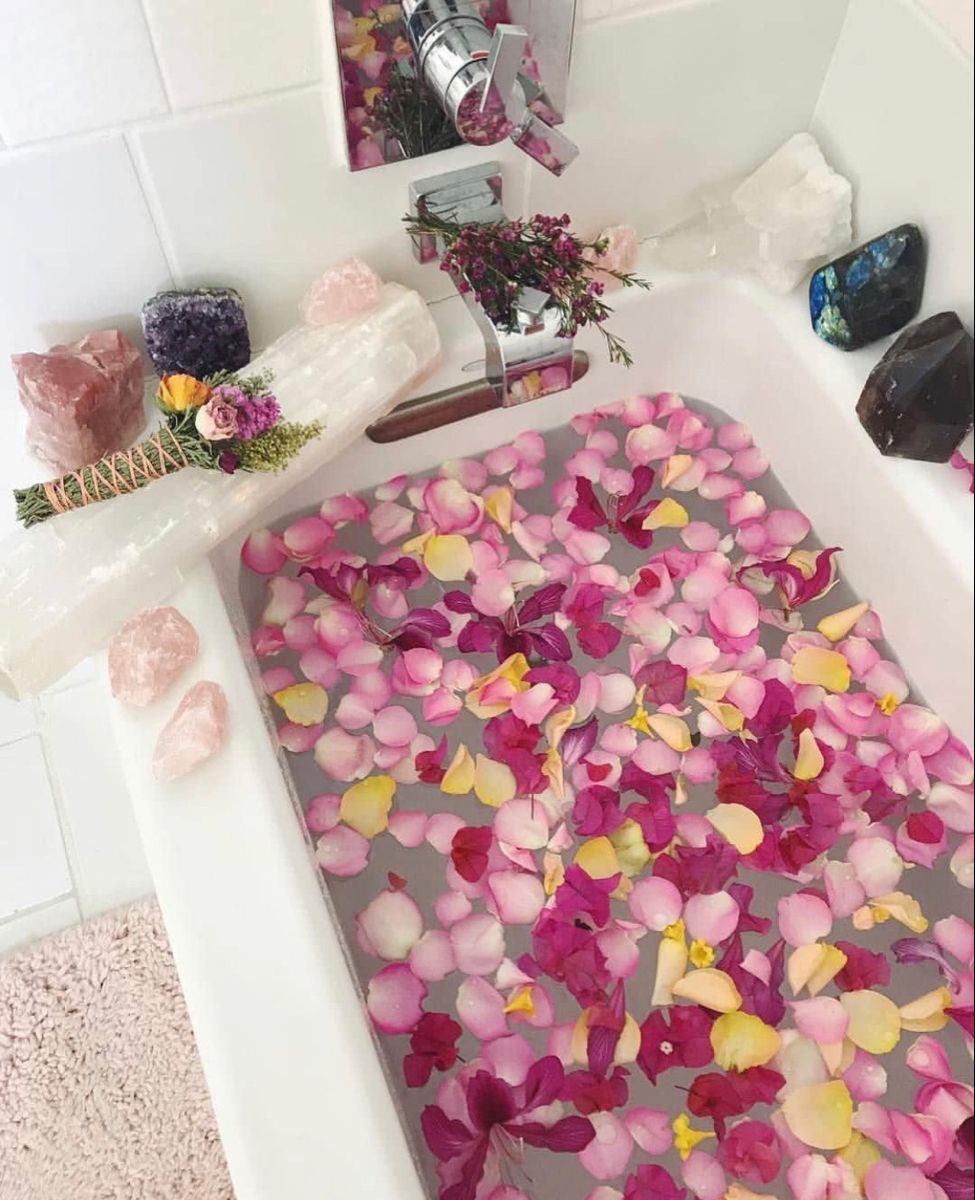
Health Benefits of Magnesium Bath Salts
There are those who love to run a bath daily or weekly and those who treat a bath as a special occasion. Whatever type of bath person you are though, you’ve probably considered adding bath salts to your bath…perhaps you have heard of Epsom salts or Dead Sea salts or the lessor known pink Himalayan bath salts.
Let’s take things one at a time though and look at the history of bathing cultures, what health benefits magnesium and other minerals give you, what are bath salts and why pink Himalayan bath salts are so special.
Bathing Cultures
There is a rich history of bathing across many cultures.

(The Great Bath, Copyright J.M. Kenoyer/Harappa.com)
The first known public bath is the Great Bath of Mohenjo-daro of the Indus Valley Civilisation. It was built some 5,000 years ago.
In Ayurvedic medicine in India, bathing is believed to be a cleansing experience of both the body and the mind. The vedas recommend two to three baths a day, which include the Prataha Kaal (onset of the day) cold water bath before sunset to revitalise the body.

(Terme di Diocleziano, Italy)
The Italians have a rich history of bathing as well. Emperor Augustus who ruled Rome from 27BC to 14AD commissioned his friend Marcus Vipsanius Agrippa to build a number of projects to enrich the lives of the people of Rome, including the public baths that bore Agrippa's name. By the 4th century AD there were 864 private baths in Rome and 11 Imperial public baths. Baths were considered important to hygiene and social life. The Imperial therme of Diocleziano was 140,000 sqm and it is estimated that more than 1,500 people every hour were in the water, according to the Italian Hospitality Collection. By the 14th century AD, baths had been recognised as therapeutically beneficial. Today they are so well ingrained into Italian culture that 87% of their thermal facilities are accredited by the National Health Service for their "compliance with therapeutic appropriateness principles."
Japan has been known for their "onsens" culture for about 3,000 years. Onsens are hot mineral springs, many of which formed along Japan's volcanic belts. Emperors would visit them and Buddhist monks would espouse their curative properties. The Kusatsu Onsen in Gunma Prefecture is one of the most famous hot springs known for its curative properties, with sulphur, iron, aluminium sulfate and chloride amongst its minerals, touted to help with arthritis, fatigue, high blood pressure and muscular ailments.
A Japanese study on the benefits of immersion bathing confirmed it helped reduce fatigue, stress and pain, leading to significantly better general health and mental health.
Balneology
Balneology is the scientific study of the therapeutic benefits of naturally occuring hot mineral waters, working on the principles of transdermal absorption.
Bathing in hot mineral have been shown to have many benefits, including helping those with joint pain, arthritis and fibromyalgia. You are literally washing away aches and pains!
You might find these academic studies/observation of interest:
Improve Auto-Immune Disease
"Those with auto-immune conditions, such as inflammatory arthritis, are a large group for whom balneotherapy may improve their immune system. Investigators have found that balneotherapy moderates the immune system’s attack on itself – perhaps a result of the antiinflammatory effects - therefore helping restore the ability of the system to focus on external invasion"
("Auto-immune disease? Balneotherapy may refocus your immune system", James Clark-Kennedy, PhD Candidate, School of Health & Biomedical Sciences, RMIT University Australia)
Improving Immunity
"As long as we take the right bathing method and guidance, hot spring bathing (balneotherapy) has obvious effect on improving the body’s immunity."
("Obvious effect", Dr Agishi Yuko MD, Honorary professor of Hokkaido University Japan)
Improving General Health
The Global Burden of Disease Study 2010, a large-scale collaboration funded by the Bill and Melinda Gates Foundation to assess trends in health and disease in 187 countries, released its rankings of the top 10 countries with the highest healthy life expectancies. Japan topped that for the males and females with the highest healthy life expectancies.
According to a study the Japanese practice of hot springs bathing and drinking green tea, could be a contributor to their health outcomes.
The long and short of it is that bathing could be a natural remedy or certainly boost our health just by doing something as simple as a twice-weekly foot soak!
Types Of Magnesium Bath Salts
What makes hot springs of therapeutic use are its essential minerals (including magnesium) and of course the hot water. Bath salts enable you to take a miniature version of that ecosystem for use at home in your bath.
Epsom Salts, despite its name is not a bath salt. It is magnesium sulphate, which is a combination of magnesium and sulphur. A lot of people suffer from magnesium deficiency and so the primary benefit is the skin's aborption of magnesium, what some people refer to as transdermal magnesium absorption. Magnesium has been shown to help people with muscle soreness, diabetes (it helps regulate blood sugar) and high blood pressure, and of course people with low magnesium levels.
Dead Sea Salts are a well known bath salt. People have been going to the shores of the Dead Sea for centuries to soak and swear by its curative properties. Dead Sea Salt contains 21 minerals including magnesium, calcium, sulfur, bromide, iodine, sodium, zinc and potassium. These are basic minerals our body needs to function and have many benefits.
And then there are pink Himalayan bath salts...
Why are pink Himalayan bath salts so special?
Crystal salt in the olden days was known as "kings' salt" and usually reserved for nobility. Himalayan bath salts are crystal salts mined by hand near the foothills of the Himalayan mountain ranges.
Legend has it that Alexander III of Macedonia (more commonly known as Alexander the Great), whose empire spanned across Asia, Africa and Europe, discovered them while making his way across what was then India. He stopped his army in Khewra and his horse began licking the stones on the ground. Intrigued a soldier studied one and found it was salt!

The bath salts are so special because of two reasons.
First, it has 80+ minerals in it including lithium, magnesium, potassium, calcium, iron, copper, zinc, selenium, gold and calcium. That's significantly more minerals than what are in Epsom Salts or Dead Sea Salts. A lot of people ask "why is Himalayan salt pink?" The pink colour comes from the trace minerals in it, such magnesium, potassium and calcium.
Second, as it comes from salt veins formed when ancient seabeds were pushed inland, they are the result of hundreds of millions of years, from a much environmentally purer time!
The Best Of Both Worlds?
Although they have more minerals in them, the one potential drawback of Himalayan bath salts is they have lower magnesium content than Epsom Salts or Dead Sea Salts. This has led to a number of brands, including us, to add magnesium supplementation to the mix so you can get the best of both worlds. Some brands will add Epsom Salts to the mix and others add magnesium flakes.
Epsom salts are for the most part synthetically made for the mass market whereas magnesium flakes, or magnesium chloride, are naturally occuring. As magnesium choloride is wholly soluble, it has higher bioavailability and is better absorbed by the skin than magnesium sulphate (epsom salts).
We supplement our Himalayan bath salts with magnesium chloride to give you the best of both worlds.
So the next time you are wondering about magnesium bath salts and which to dissolve in water / your bath, make sure it is the Kings' salt....pink Himalayan salts. It's time to hop in a bath and bathe your way to better health.

Comments
Such a wonderful blogpost on bath salts. Thank you for sharing. Look forward to reading your next posts.